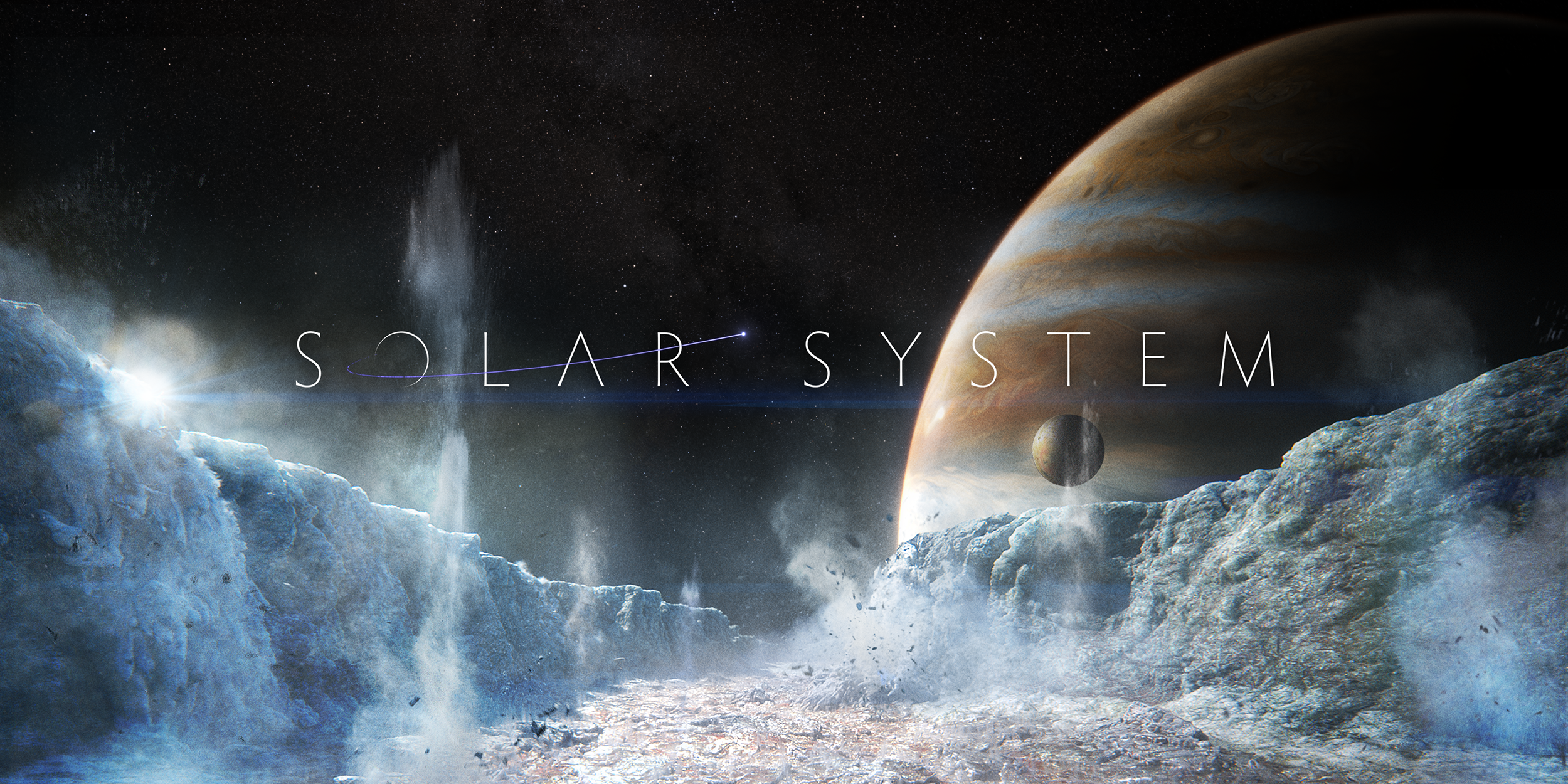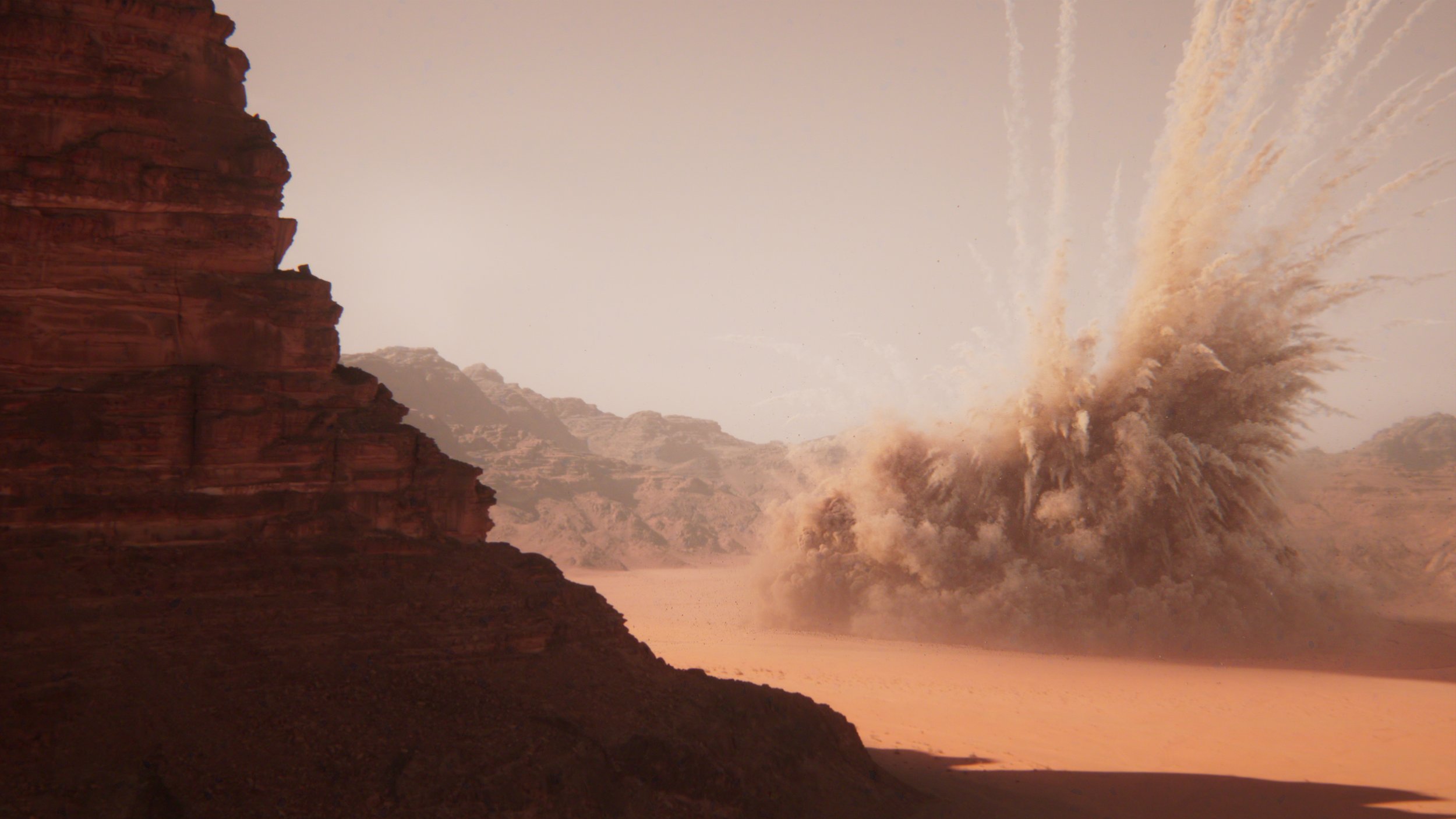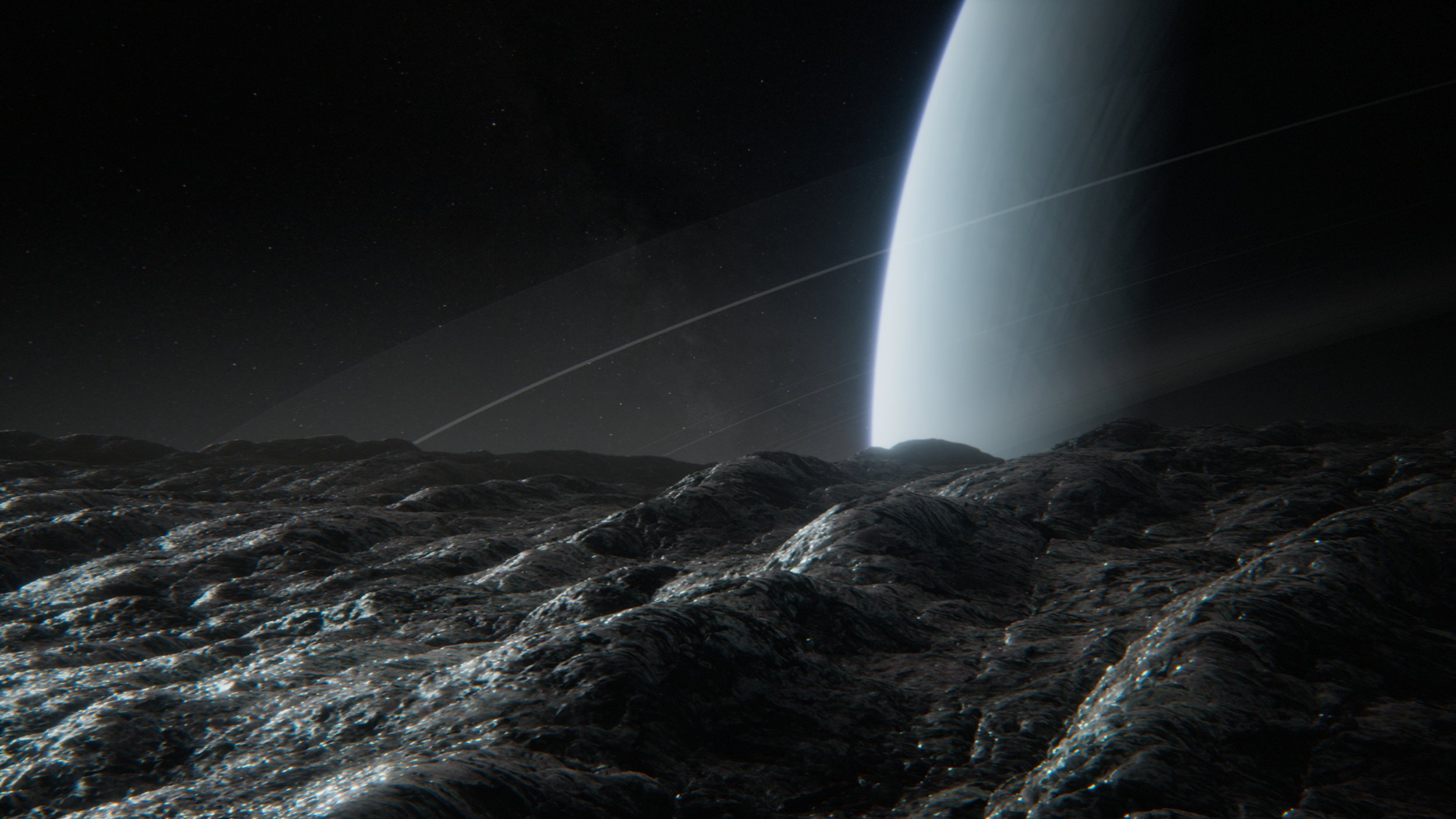Solar System
The Brief
Improvements in telescopes, drones and other technologies have allowed us to understand more of the solar system than ever before. Solar System explores these new territories, visualising cosmic storms, volcanoes, ice worlds, oceans and more. Our challenge was to create an immersive and visceral cinematic wonder from a low-orbit and on-planet perspective.
Client
BBC Studios Science
Year Delivered
2024
What We Did
Using a mix of Houdini, Maya, Gaea, Nuke and ZBrush we created a plethora of different planets, cosmic features, asteroid collisions, weathers and events in over 400 VFX shots for the five episodes of the series. We visualised epic vistas inside Jupiter's electric storm clouds, flying through Europa’s crumbling ice canyons, witnessing ‘never seen before’ superionic ice on Uranus, enormous dust storms covering Mars, seas and lakes filled with liquid methane on Saturn's largest moon, Titan, and exploring the deep caverns of Miranda, as we follow a rock into the darkness on Uranus.
With our team’s experience and understanding of the subject matter, storyboard, and animatic skills, we were able to break down the full VFX requirements and determine where the budget best lay for making the show as cinematic as possible. Artistically, this saved a lot of time. Our detailed knowledge of the planets meant we were able to dictate the look more accurately as a result.
With each episode focusing on different aspects of the solar system, differing approaches were needed for constructing the new worlds covering ice, storm, dark, strange and volcano worlds. Each environment had a different character, and we worked closely with BBC Studios Science Unit, who liaised with researchers and scientific experts for each episode. The majority of the shots were full VFX builds with some using plates from shoots in Portugal, Iceland and the USA.
Dust storms, collisions, and atmospheric effects were critical for creating realistic on-planet visuals for the series. For dust storms, fluid sims helped simulate large swirling clouds of sand and debris. Procedural processes within Houdini were used to create vast amounts of bespoke cloud elements. Procedural Dependency Graphs allowed us to build a template, which would in turn control the simulation and variation created via our render farm. This also allowed us to focus on an individual element before propagating the parameters, with variations added to things such as turbulence, velocity and divergence.
Asteroid collisions were designed with a focus on realistic impact physics and debris distribution. When working with astronomical simulations, capturing a sense of scale is important, so a keen understanding of how large-scale objects behave in a vacuum is crucial. Using Houdini, we were able to create very high-resolution Rigid Body Dynamics (RBD) simulations, with complete control over the pre-fractured piece size, sub fractures and debris. Being able to dynamically visualise and control the size of the pieces before pushing this into a sim was very advantageous and ultimately saved us a lot of time in the initial builds.
Being tasked with augmenting shot plate photography brought its own set of challenges for the FX department. Highly detailed fluid sims were required that needed to react and collide with the plate photography. Photogrammetry played a critical role and allowed Lux Aeterna to capture high-resolution 3D models of actual environments.
Our FX team used this data to create collision geometry, physical representations of input terrain, for fluid simulations. This allowed the simulations to interact accurately with the surfaces created from the plates, ensuring the flip sims behaved naturally when colliding with objects or impacting the ground. Once we created the collision sources we were able to reproject the plate over this new geometry collision source, allowing us to run very high resolution fluid and white water sims where the physics would be plausible. This also had the added benefit of allowing the colours and details from the original plate to bleed into the transmission and reflectivity of the CG water, embedding the water into the shot and aiding photorealism. Together, these techniques gave the series a highly detailed and authentic feel, making the interactions between natural phenomena and the environment believable.
The Results
We delivered some of our most complex VFX to date using the latest cosmological data. When asked about the challenges of producing a series like Solar System, Executive Producer Gideon Bradshaw highlighted the demands associated with a global series of this kind and the challenges of making sure it is managed efficiently. “These series’ have an extremely high expectation that they need to really look fantastic, sound fantastic, work for a global audience [...] I think, hopefully, we and Lux Aeterna have delivered on that,” said Bradshaw. “I think Lux Aeterna are brilliant at helping production make sure that the most ends up on screen.”
Solar System, Episode 1 aired Monday 7th October, winning the 9pm slot in the ratings with 1.7M viewers (13.8%) - nearly double the 881,000 (6.7%) average audience for the slot.
Take a look at our Solar System reel and breakdowns here.





